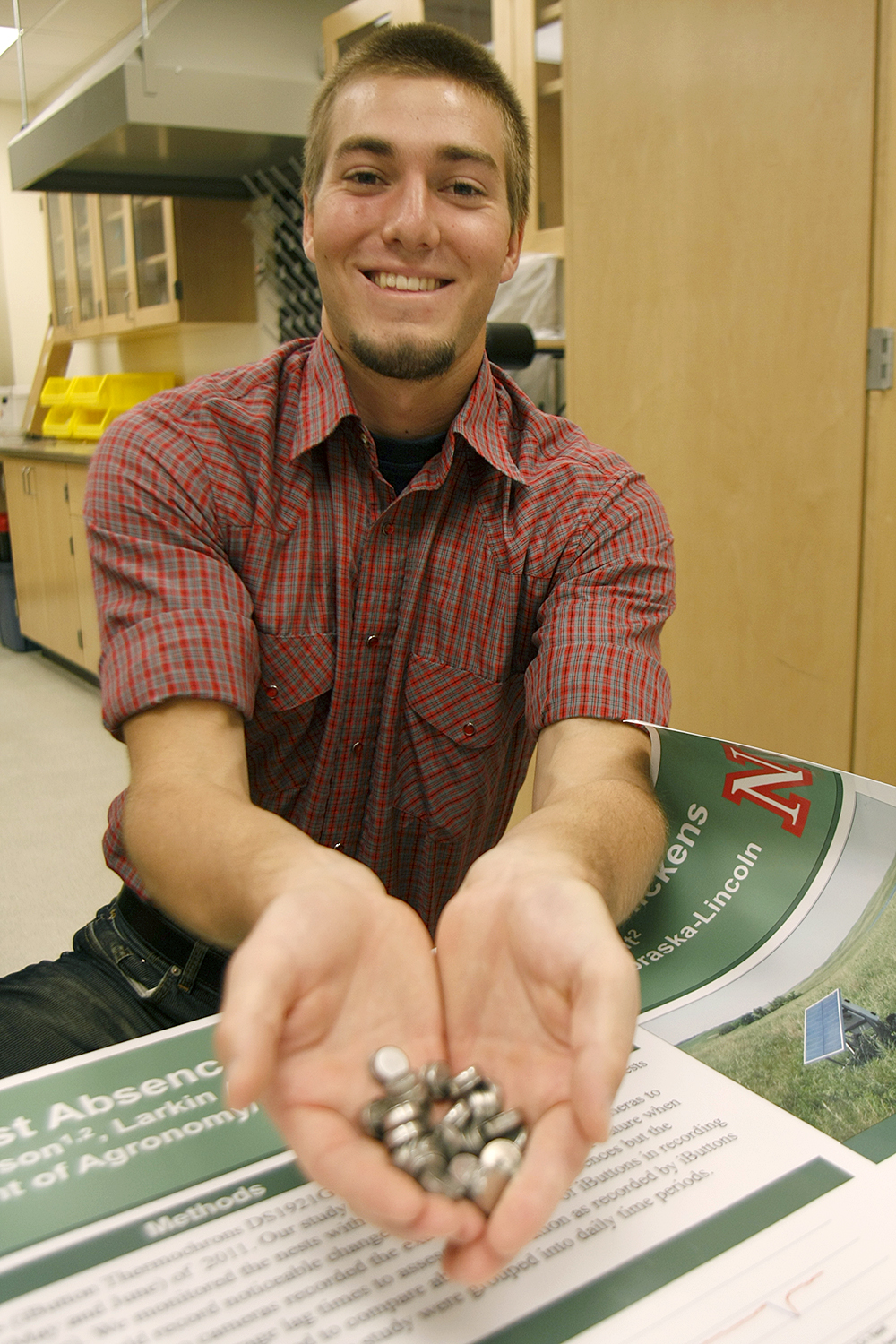
If there's a case to be made for raising children in rural, equatorial Africa, Josiah Dallmann would be the poster child.
Dallmann, a junior fisheries and wildlife major at the University of Nebraska's School of Natural Resources, was born in Denver, Colo., but spent his childhood in Africa. The product of missionary parents, he spent his formative years in Cameroon, a country about the size of California on the southeastern border of Nigeria on the African west coast. Intensely good natured — and usually smiling everywhere he goes — Dallmann finally planted roots in Nebraska where he stoked his Africa-born love of wildlife into a passion for conservation.
Still a year away from graduation, Dallmann has already impacted our scientific understanding of Nebraska wildlife, helping conservation biologist Larkin Powell further his research into greater prairie chicken nesting habits.
With funding from the Undergraduate Creative Activities and Research Experiences endowment, Dallmann installed small temperature sensors in the nests of prairie chickens in the Nebraska Sandhills. By measuring and storing minute-to-minute temperature variations, Dallmann could determine when and for how long a hen left its nest and eggs.
Dallmann's findings were part of a larger project that Powell used to help ranchers who wanted to manage or maintain prairie chicken habitat on their land. But the greater outcome could be the potential for wider applications of these relatively inexpensive temperature sensors, iButton Thermochrons, said Powell, the interim associate director of the School of Natural Resources.
"We'd like to be able to use this on lots of different projects," he said. "To know that we can use this technique is really useful."
Powell said he plans to use iButtons on another research project this summer, one that will study the effect of wind energy turbines on prairie chickens.
Before iButtons, the most common way to keep tabs on nesting habits was with expensive video cameras. At $15 each, the iButtons offer a more practical solution. Dallmann said he was initially concerned that placing a small, metallic object—about the size of three stacked nickels—would cause hens to abandon the nest. But he said he saw no evidence of that during his study.
Although it was a small study, Dallmann's research has already presented some surprises.
As part of the study, he installed video cameras that captured unique predator activity at the nesting sites—he recorded a bull snake, a coyote and an American badger feasting on prairie chicken eggs.
"We knew that something was taking their eggs," Powell said, "but we didn't know what."
The iButton research also showed that hens don't sit on their eggs just to keep them warm. Rather, they also keep them cool under a hot, summer sun.
"We think they're actually shading these eggs," Powell said. "We think of hens as keeping their eggs warm. But in some cases, if it's a hot day, the temperature actually goes up when the hen leaves the nest."
Dallmann condensed his research into an award-winning explanatory poster that took first-place at a competition during the Life Sciences Symposium on Sept. 25. The symposium was part of the larger UNL celebration that marked the 150th anniversary of the 1862 Morrill Act which established land-grant universities like UNL.
-Charlie Litton, Communications Specialist, School of Natural Resources
###
View the poster at: http://snr.unl.edu/images/news/2012/dallman_poster.pdf
UCARE: http://snr.unl.edu/undergrad/funding/ucare.asp
-- Charlie Litton